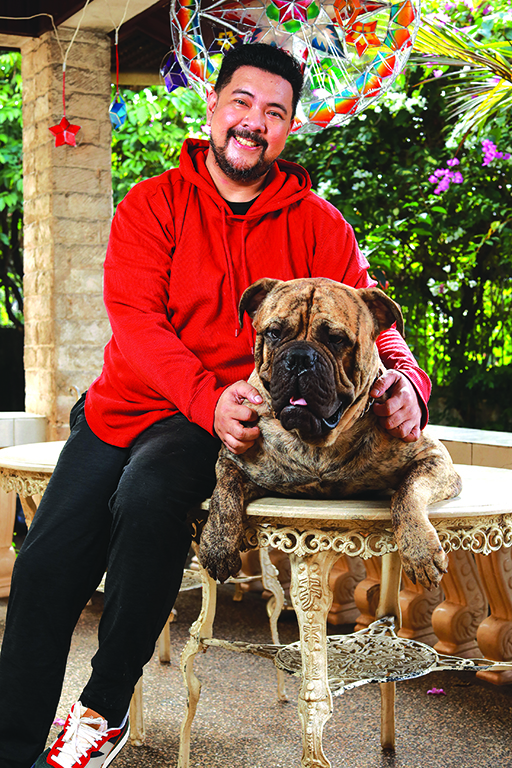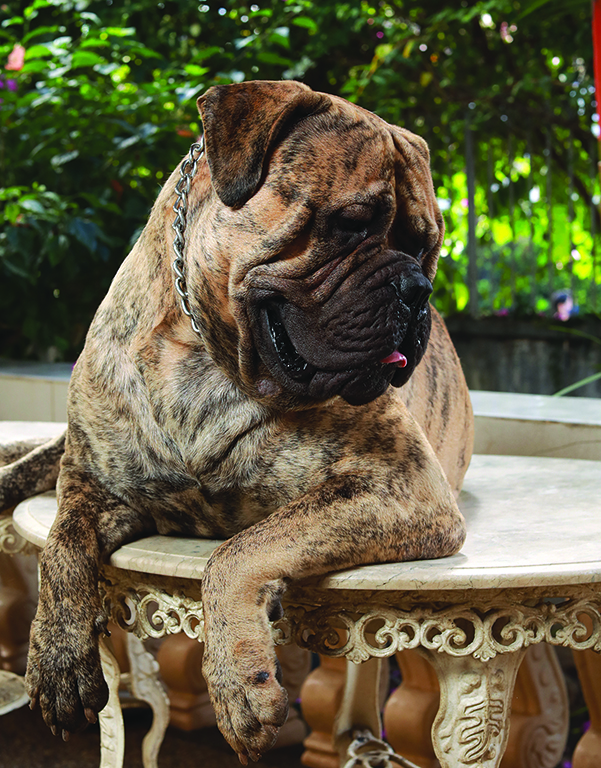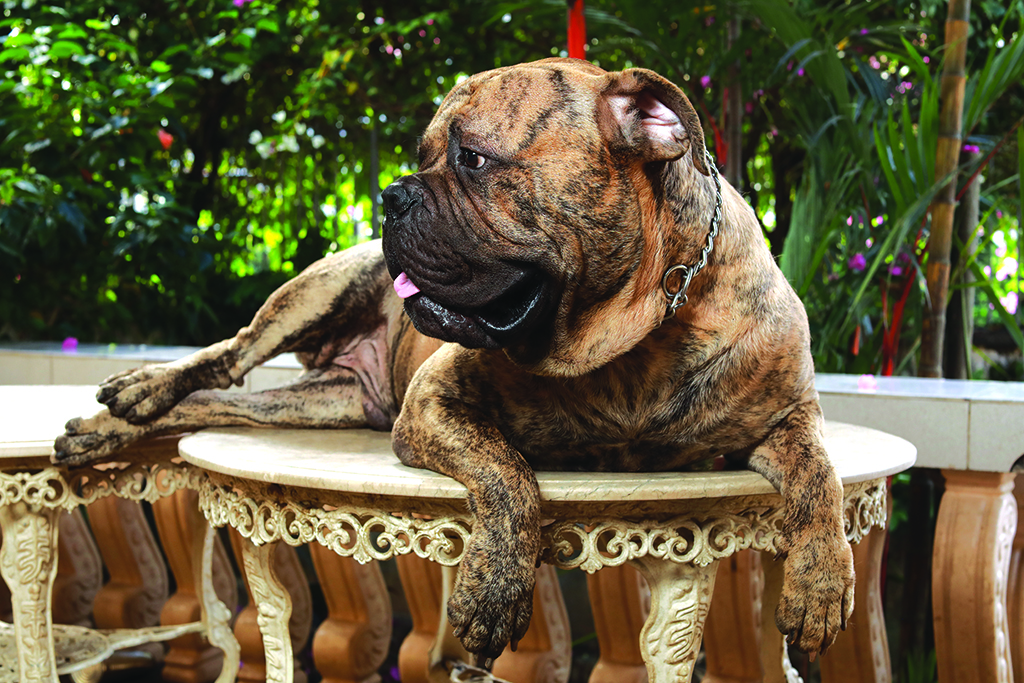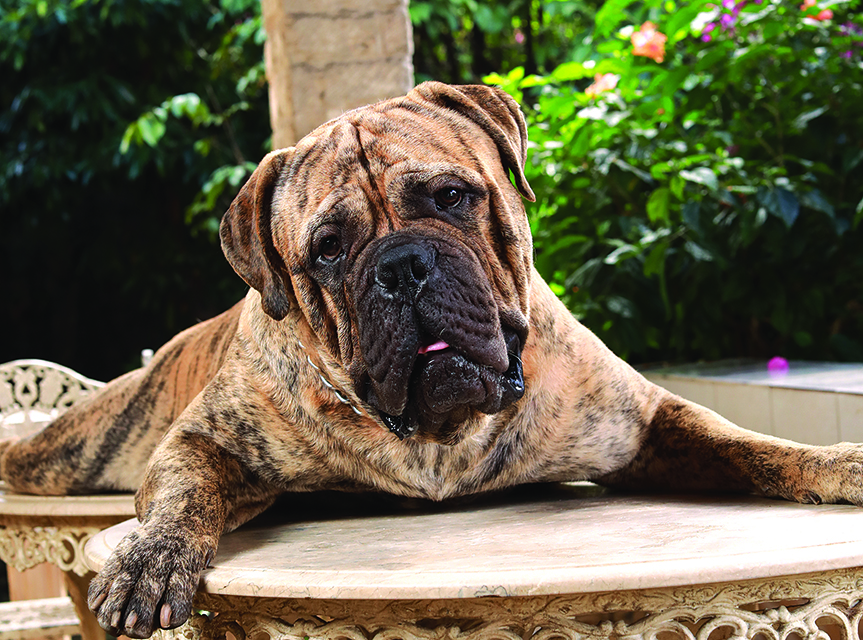A cross between the Bulldog and the Mastiff, the Bullmastiff is a Dog with strong and dignified origins. A breed steeped in history and often described as the best of both worlds, Bullmastiffs are now known for somuch more than what they were called over a century ago: The Gamekeeper’s Night Dog.

HOW THE BULLMASTIFF CAME TO BE
The creation of Bullmastiffs can be traced back to 19th-century gamekeepers, people meant to breed and care for game animals. According to the American Kennel Club, poachers were hunting animals on English aristocrats’ land despite death penalties in place to prevent it.
In response to this never-ending problem, gamekeepers began to breed different combinations of Dogs. Their effort to find the perfect deterrent to poaching paid off when they came upon the Bulldog-Mastiff breed, at a ratio of 40% Bulldog and 60% Mastiff. The resulting Bullmastiffs had the size to scare away trespassers and the strength to capture poachers, but the discipline to listen to their gamekeepers and keep the poachers alive.
Though gamekeepers once preferred Bullmastiffs of a dark brindle color so they would be camouflaged at night, aristocrats began to prefer fawn-colored Bullmastiffs. According to Petfinder, these Dogs would eventually fulfill other functions, including the role of estate sentry.
In 1924, the English Kennel Club recognized Bullmastiffs as a pure breed, and the American Kennel Club followed less than a decade later.

LOVING A BULLMASTIFF
Though the Bullmastiff isn’t quite as large as Mastiffs, their size and their origin can still seem a little daunting to potential human companions. Still, they aren’t always a dealbreaker.
Gines Enriquez is a fur parent who takes pride in being his Bullmastiff’s “dog daddy.” He named his Bullmastiff Marshal “because he looks like someone who could restore peace,” but he “turned out quite the opposite.”

According to Petfinder, Bullmastiffs are generally docile animal companions and guardians, but can be stubborn and assertive, especially in the presence of other Dogs. They recommend that Bullmastiffs be raised in “a firm but loving home.”
In Marshall’s case, Gines says he loves to eat, sleep, and play with him and the other Dogs at home. He isn’t wary of strangers or Dogs outside either! Marshall enjoys bath time, quick walks, and making friends along the way.
Gines says, “He expresses his love by kissing me on my face until I tell him to stop and when he needs attention, he would lean on my leg.” The affection Marshall shows Gines is not uncommon among Bullmastiffs; Hill’s
Pet Nutrition states that Bullmastiffs are gentle, calm, and easy-going, which makes them wonderful for families.

CARING FOR A BULLMASTIFF
The American Kennel Club recommends that Bullmastiffs have access to outdoor areas for daily exercise and play. Gines says Marshall also prefers open spaces “where he can run around and play,” as well as cold surfaces like marble flooring instead of cushions.
In terms of nutrition, human companions are also advised to keep their Bullmastiffs lean by feeding them frequent small meals as Puppies at least two larger meals every day as adult Dogs. The American Kennel Club explains that Bullmastiffs “grow very rapidly, which can tax their systems.”
In terms of flavor, Marshall doesn’t seem to be picky. Though Marshall does have a favorite brand, Gines says, “He likes anything!” However, he also warns that one should be ready to have a Bullmastiff with the appetite of a dinosaur.
While Bullmastiffs are fairly low-maintenance on the grooming side, human companions should expect a bit of flatulence from their furry friends. According to Daily Paws, Bullmastiffs are brachycephalic or flat-faced, which means they may slobber, snore, or get gassy more than some breeds. The good news is these can be managed with a diet and help from a trusted veterinarian, according to a 2021 article by Claudia Guthrie and Tracey Kelley for Daily Paws.
A DAILY PROTECTOR
“Play, kisses, grooming, mealtime, sleep. Repeat.” That’s what a day in the lifeof Gines and Marshall looks like. Every day is filled with unconditional love, unwavering protection, and loyalty.
Gines says, “They will not leave your side and will protect you from anything.”
While that may be true of many animals and their human companions, Gines suggests the difference between Bullmastiffs and other breeds is their sense of humor: “They are jokers and aware of their weight because they know they can throw it around.”
With a Bullmastiff at home, one not only gains a protector but also
a member of the family.

BREED STANDARDS
HEIGHT: 25 to 27 inches (male) and 24 to 26 inches (female) WEIGHT: 110 to 130 pounds (male) and 90 to 110 pounds (female) COAT: Short, hard, flat to the body
COLOR: Pure brindle, fawn, or red with a black muzzle and dark markings around the eyes
LIFE EXPECTANCY: 8 to 10 years
TEMPERAMENT: Protective, loyal, alert






